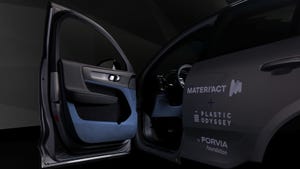During her eight years working at Creganna Tactx Medical (Galway, Ireland), a contract manufacturer specializing in minimally invasive medical devices, Sinéad Kenny was struck by the complexity and cost of manufacturing catheters. "I saw, day in and day out, on the manufacturing floor how expensive and difficult it is to make these products," Kenny told PlasticsToday. In particular, to impart lubricity to the device, polytetrafluoroethylene (PTFE) liners are bonded to the inside of the catheter and a hydrophilic coating is applied to the outside.
December 8, 2014
. In particular, to impart lubricity to the device, polytetrafluoroethylene (PTFE) liners are bonded to the inside of the catheter and a hydrophilic coating is applied to the outside. "There had to be a better way," says Kenny. She thinks she has found it. In April 2012, Kenny took redundancy from Creganna and formed a startup company, DiaNia, also based in Galway, to develop and commercialize an extrusion technology that would reduce the conventional 15 step process to a mere seven steps.
Extrulub technology eliminates eight steps in the current production process of cardiovascular introducers, for example, by building in lubricity on the inner and outer surfaces of the tubing. Instead of loading and stretching the liner, doing the reflow, removing the heat shrink and mandrel, and trimming the jacket liner, the Extrulub production process begins directly with the overmolding step. "By eliminating dip coating and other batch processes and adopting a continuous manufacturing process, you can just extrude and build the device," says Kenny. The process would foster significant savings in unit costs and headcount as well as improve yield, according to Kenny.
In addition to enabling a leaner manufacturing process, "removing the liner reduces the device profile, allowing catheter design engineers to make smaller catheters that can reach more places inside the body," says Kenny. She envisions the technology as a potential game changer for surgeons, enabling easier device insertion and increased functionality.
Kenny has built three prototypes and plans to build several more. A number of mechanical, material, and other tests have already been conducted and have shown positive results.
The technology is still in development, but Kenny has initiated talks with a number of companies worldwide.
The goal of DiaNia is to license the technology so that that the company can stay focused on innovation. "Plan A is to develop a device ourselves, which we would not commercialize, to move the technology through the regulatory process," says Kenny. "Plan B, which we prefer, is for a medical device OEM to partner with us and apply the technology to its products and get regulatory approval."
Given her background in materials science—she earned her doctorate in biomedical cements and has spent a total of 15 years engineering device delivery systems—Kenny is keenly interested in advancing medical materials applications. "Our goal at DiaNia is R&D and commercialization of extrusion technology through materials science," says Kenny. "Next-generation medical devices could benefit greatly from new materials, but, first, you have to overcome the regulatory hurdles."
We will start to get an idea of how well DiaNia does on that front starting in mid-2015, when Kenny expects to initiate the regulatory process, with or without an OEM partner.
Norbert Sparrow is Senior Editor at PlasticsToday. Follow him on twitter @norbertcsparrow and Google+.
About the Author(s)
You May Also Like




